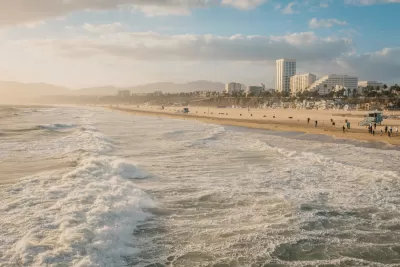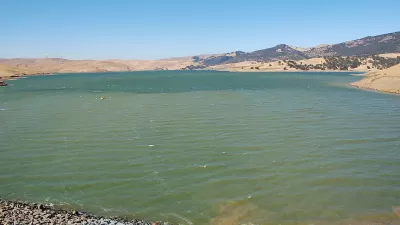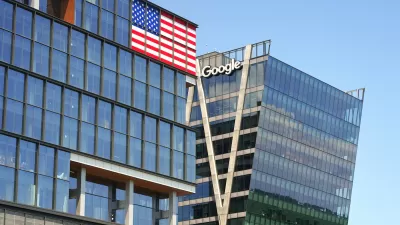This is a story about green building practices, conservation, and rainwater capture—not desalinization.

Matt Weiser reports on the water conservation efforts of Santa Monica—where the city has pushed on as if the state of California's historic drought never ended. The article includes an in-depth question and answer session with Dean Kubani, chief sustainability officer of Santa Monica.
Kubani describes an approach to water conservation that includes real penalties for exceeding allowances, generous incentives for drought-tolerant landscaping, and a water neutrality ordinance that requires any new development and major renovations not exceed current water usage.
Kubani explains how the city decided to keep those programs in place, even after last year's exceptionally wet rainy season:
So when the state declared the drought was over, Santa Monica chose to keep the water-use allowances, the incentives and everything in place and move forward. And we’re still at 20 percent below our baseline water use, which was set in 2013.
The city of Santa Monica set a goal to wean itself off imported water by 2020, meaning it would stop using imported water from the Colorado River and Northern California, supplied by the Metropolitan Water District of Southern California. To increase its local water supplies, Kubani says the city has groundwater wells and is in the process of constructing 6 million gallons of water supply capacity in underground cisterns.
Currently the city is importing 30 percent of its water supply, and Kubani is optimistic the city can reach, or very nearly reach, its goal of ending water imports by 2020.
FULL STORY: Santa Monica Prepares to Eliminate Water Imports, Drought-Proof Supply

Planetizen Federal Action Tracker
A weekly monitor of how Trump’s orders and actions are impacting planners and planning in America.

Maui's Vacation Rental Debate Turns Ugly
Verbal attacks, misinformation campaigns and fistfights plague a high-stakes debate to convert thousands of vacation rentals into long-term housing.

Restaurant Patios Were a Pandemic Win — Why Were They so Hard to Keep?
Social distancing requirements and changes in travel patterns prompted cities to pilot new uses for street and sidewalk space. Then it got complicated.

In California Battle of Housing vs. Environment, Housing Just Won
A new state law significantly limits the power of CEQA, an environmental review law that served as a powerful tool for blocking new development.

Boulder Eliminates Parking Minimums Citywide
Officials estimate the cost of building a single underground parking space at up to $100,000.

Orange County, Florida Adopts Largest US “Sprawl Repair” Code
The ‘Orange Code’ seeks to rectify decades of sprawl-inducing, car-oriented development.
Urban Design for Planners 1: Software Tools
This six-course series explores essential urban design concepts using open source software and equips planners with the tools they need to participate fully in the urban design process.
Planning for Universal Design
Learn the tools for implementing Universal Design in planning regulations.
Heyer Gruel & Associates PA
JM Goldson LLC
Custer County Colorado
City of Camden Redevelopment Agency
City of Astoria
Transportation Research & Education Center (TREC) at Portland State University
Jefferson Parish Government
Camden Redevelopment Agency
City of Claremont





























